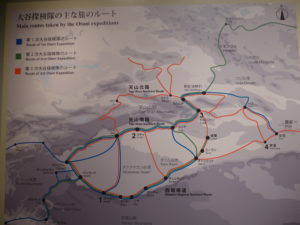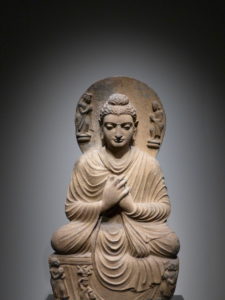Just for Fun – Art Review: Tokyo National Museum’s Toyokan Gallery
The Toyokan Gallery at the Tokyo National Museum
On a rainy Tuesday in Tokyo, I found myself with a lot of time to kill at the Tokyo National Museum and as a result, ended up meandering into its Toyokan Gallery. A small, compact gallery, it houses some phenomenal art and artifacts from ancient China. While the Museum’s “Highlights of Japanese Art” is what draws in most tourist, a stop at the Toyokan Gallery is equally a must.

Camel on the Silk Road
At the turn of the 20th century, while Qing Dynasty China was in a state of disarray, much of Western China became part of an international, archeologist race for who could uncover the ancient Buddhist capitals of the Silk Road. With those discoveries also came a wealth of riches, namely the ability for those archeologists to take some of China’s most impressive artifacts back to their home countries. Although the British, with Aurel Stein, and the French, with Paul Pelliot, obtained some of the most well-known artifacts from Western China, the Japanese were in on the game, sending a mysterious figure, Count Otani Kozui to these far reaches of China.
It is his discoveries – and many other Japanese archeologists and collectors who soon followed in his path – that make the Toyokan Gallery an impressive collection. While the Museum does not exhibit any of the original work that Count Otani obtained during his three exhibitions to the celebrated, ancient Silk Road city of Dunhuang, the Museum does lay out other artifacts that show the beauty of Chinese art from the the eighth century, as well as the early sinicization of Buddhist sculpture. In addition to pieces from far Western China, the Toyokan also has a number of splendid Buddhist wall sculptures, also from the 700s and lifted from a Buddhist site from the then capital of China, Chang’an (present day Xi’an). The Museum does not explain how or why it has these niche carvings, but the collection is something to be seen.

A sublime example of Gandhara Buddhist artwork
But what makes the Toyokan Gallery truly superb is it large collection of Buddhist art from Gandhara, a kingdom which existed between 1200 BC and 500 AD and was conquered by Alexander the Great in 327 BC. Gandhara was located in what is now present-day Afghanistan and Pakistan. As a result of its history and geography, Gandharan art, with its crossroads of the Western world and the Eastern civilizations, shows the confluence of both. It was also one of the first civilizations outside of India where Buddhism took hold on its way to China, Korea and eventually Japan. But shockingly for most, its statutes of Buddha are not at all Asian. Instead, the sculpture has traces of Greek and Roman influences – Buddha with western facial features, with curly hair. The Museum has some key pieces that truly highlight the beauty that is Gandharan Buddhist art and leaves the spectator in awe. It would be a travesty to go to the Tokyo National Museum and miss this remarkable collection.
The remaining floors also have other pieces of interest to Chinese art aficionados. Ceramics, lacquerware, and a rather impressive collection, largely from private donations, of Chinese scroll paintings and calligraphy.
Given its size, adding the Toyokan Gallery will probably only add an extra hour to your visit to the Tokyo National Museum. But in that hour, you see some of the finest examples of Gandharan and western Chinese Buddhist art. Expect your mind to be blown. And it would be crazy to miss that.
Rating: 




Toyokan Gallery (the Asian Art Gallery)
Permanent Exhibit
Tokyo National Museum
13-9 Uenokoen, Taitō, Tokyo 110-8712
Sundays through Saturday, 9:30 AM to 5 PM; Open later Friday, Saturdays & Sundays
For more information on hours and how to get there, visit: http://www.tnm.jp/modules/r_free_page/index.php?id=113
Cost = 620 Yen
 On Facebook
On Facebook By Email
By Email 

